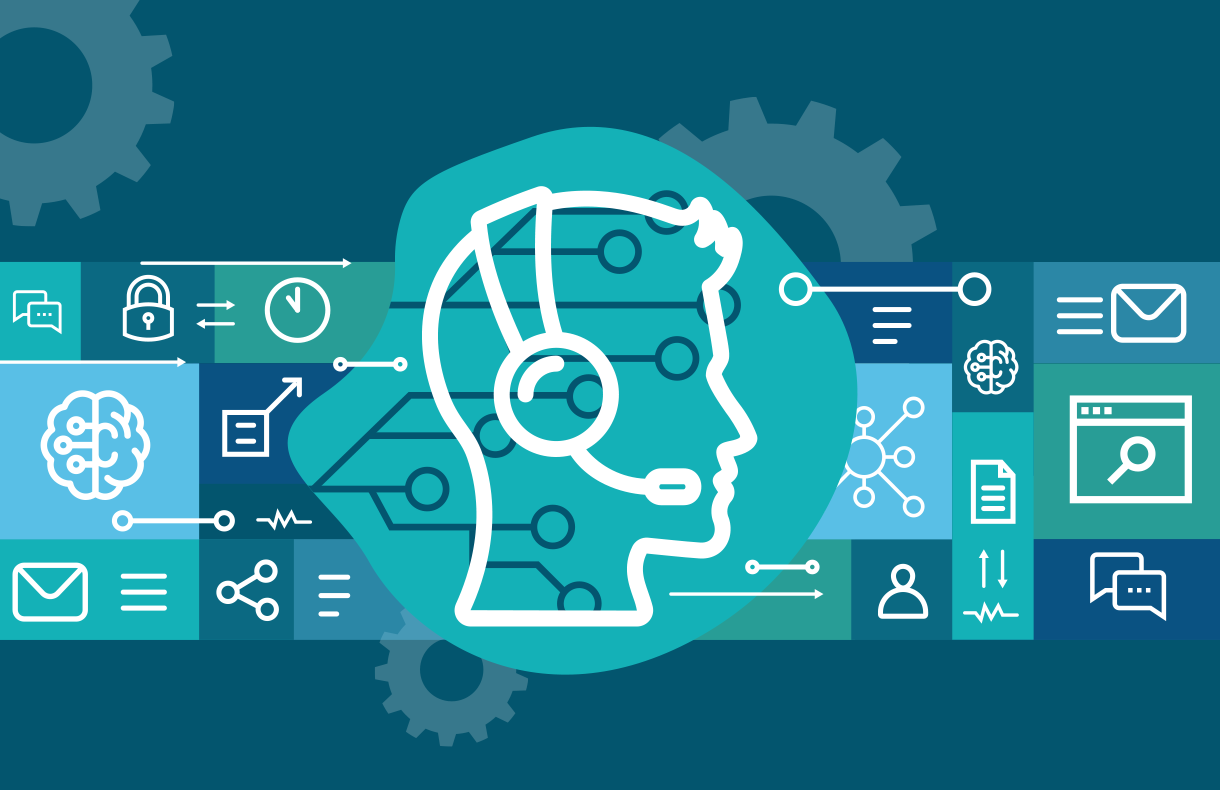The integration of Artificial Intelligence (AI) is swiftly becoming a necessity for businesses of all sizes. Why? Simply because modern AI possesses the capability to comprehend people's intentions, needs, and desires.
One such AI feature is Conversational AI – an AI-based dialogue system that independently conducts smooth, automated communication with your customers.
Improved customer satisfaction results from continuous, round-the-clock communication facilitated by conversational AI. It fosters a seamless and satisfying user experience by tailoring responses to individual needs. Additionally, Conversational AI assists in automating routine tasks, freeing up human resources for more complex and strategic endeavors.
All it needs is proper training and boom, it goes!
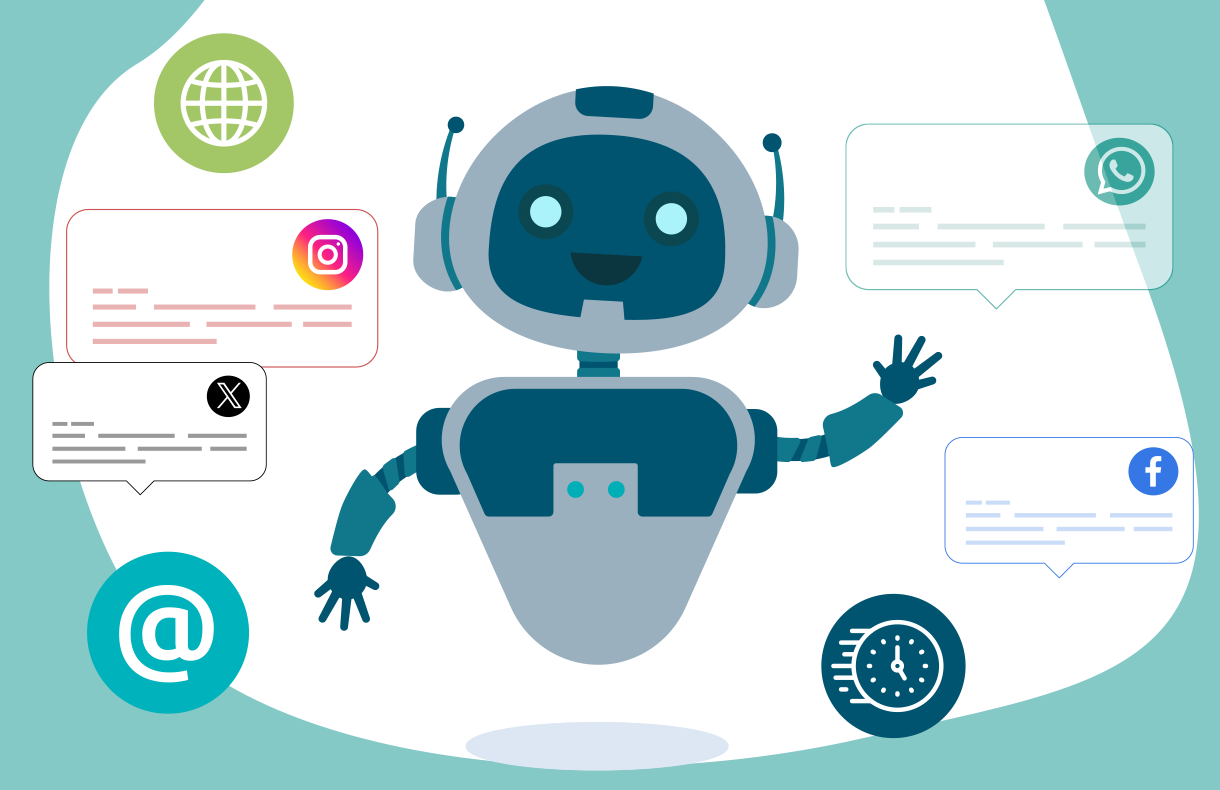
The synergy of four elements collaborates to craft a dynamic conversational AI engine – NLP, ML, ASR, and Data Mining. This engine adeptly comprehends and responds to human language, continually refining its knowledge through experiential learning, thereby delivering improved responses in subsequent interactions.
By skillfully combining these components, organizations can forge robust conversational AI solutions capable of enhancing customer experiences, cutting costs, and fostering business growth.
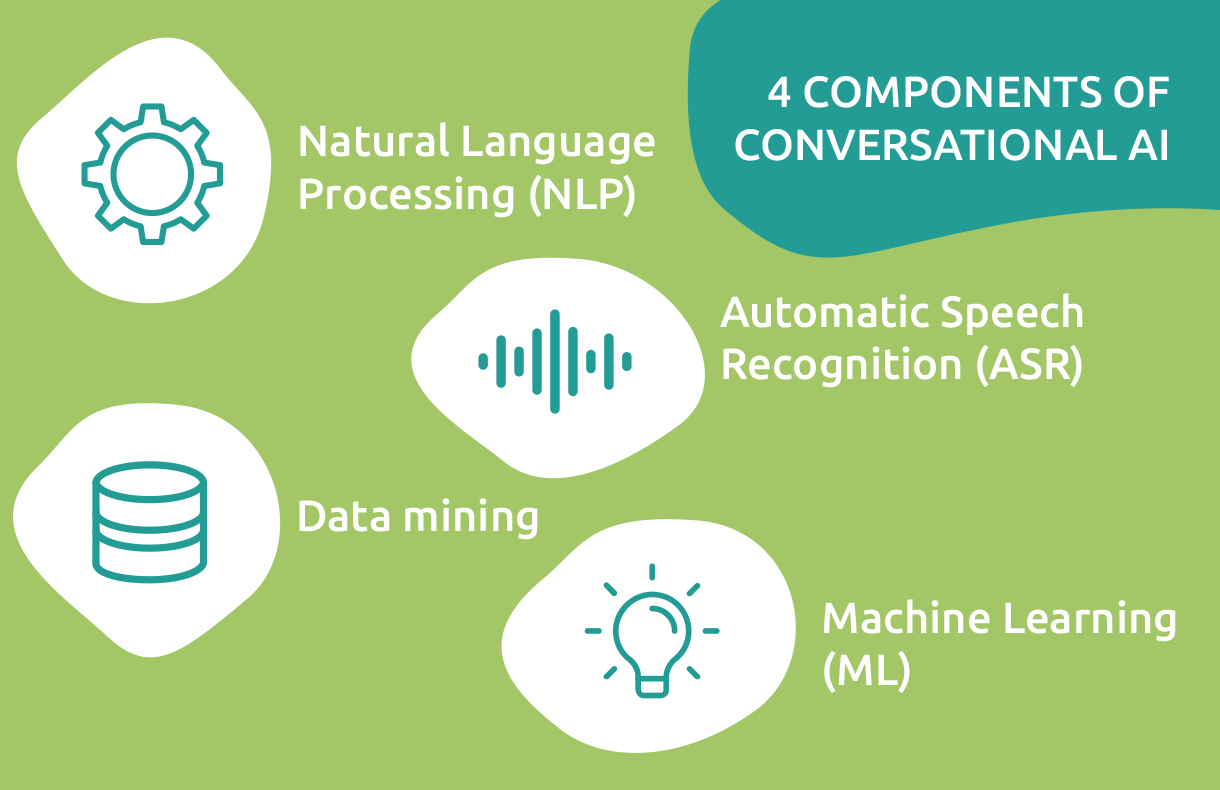
Leveraging Conversational AI provides you with automation, process streamlining, and the delivery of outstanding customer experiences.
Comprehend Customer Requests (intent recognition): Conversational AI scrutinizes customers' verbal or written inquiries to grasp their intent and meaning.
Understand the Context: AI analyzes the context of a request, incorporating past customer interactions to categorize and respond to inquiries with greater effectiveness.
Provide Answers: Conversational AI chooses a fitting response by considering the content and the relevant context. This is achieved through the utilization of pre-trained machine learning models and algorithms, which have been exposed to extensive datasets. The outcome is an intelligent and human-like answer, reflecting the sophistication of the training process.
Deliver Vocal Messages: During oral exchanges, the system produces a response in a human-like, natural language. Should the customer provide further input, the conversation persists, and the conversational AI system iterates through the complete process once again.
Data Security & Privacy: Safeguarding your customers' privacy and ensuring data security are integral elements of Conversational AI, including data encryption, access controls, secure cloud solutions, and more. Conversational AI deeply takes care of data security and privacy.
Overall, an automated customer dialogues system employs a powerful combination of compelling features that enables efficient resolution of customer inquiries and provides flexibility to adapt swiftly to changes.
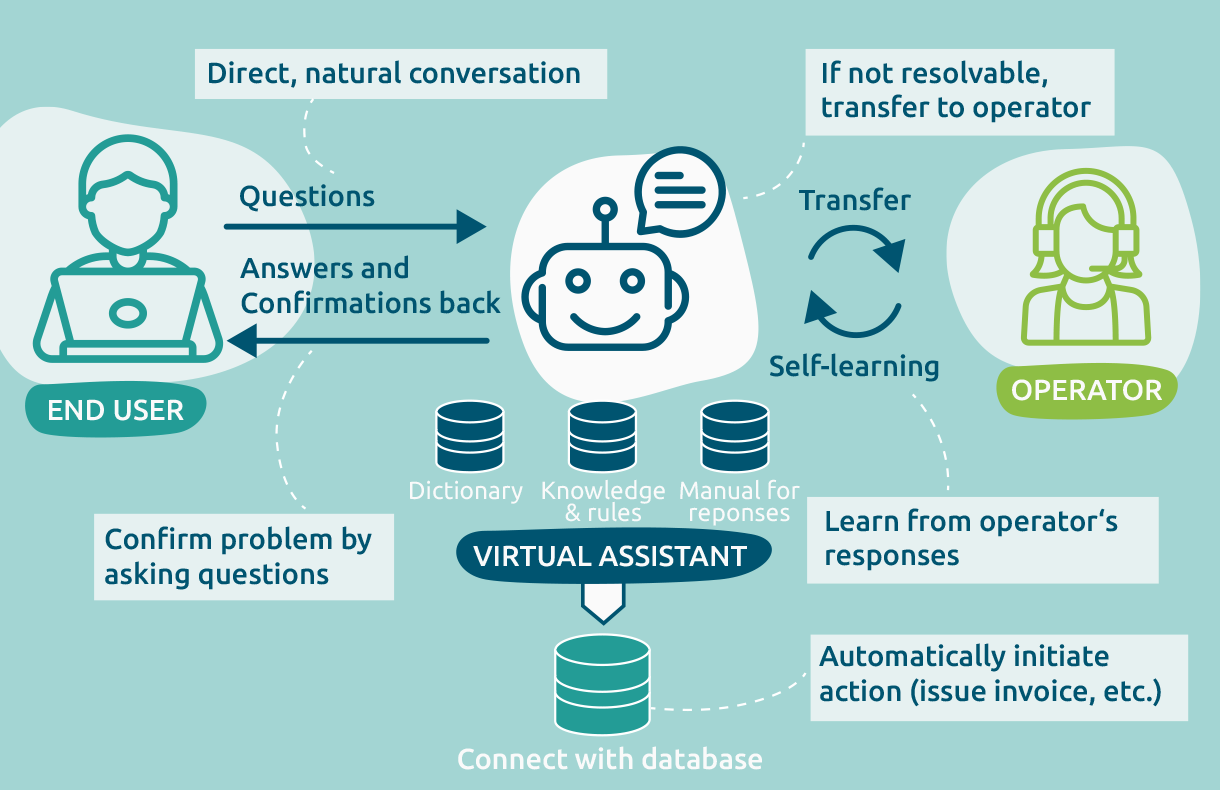
Omnichannel customer support is pivotal nowadays! Conversational AI Bot effortlessly integrates across diverse communication channels — website chats, social media, email, phone, WhatsApp, and messaging apps. This seamless integration empowers your business to connect with customers precisely where they are, fostering communication within their familiar environments.
The omnichannel capability also extends to language diversity. The AI Bot can communicate in different languages. This is particularly important if you are targeting a global audience and serving different markets. And it increases the reach of your business.
Q: What is the training process for conversational AI?
A: The training process for conversational AI involves exposing the model to large datasets of human conversations and using machine learning techniques to enable the system to understand and generate responses.
Q: Are chatbots and virtual assistants the same thing?
A: Chatbots and virtual assistants are related but not identical. Chatbots are designed for specific tasks or interactions, while virtual assistants are more comprehensive and capable of performing various functions and tasks beyond just chatting.
Q: Can conversational AI systems learn and improve over time?
A: Many conversational AI systems incorporate machine learning algorithms that allow them to learn from user interactions and improve their performance over time.
Q: Are there any ethical considerations with conversational AI?
A: Yes, ethical considerations include privacy, transparency, bias in language models, and the responsible use of AI technologies. Developers should prioritize ethical guidelines in designing and deploying conversational AI systems.
Customers today expect instant gratification and personalized attention, which conversational AI can deliver. As per a survey conducted by Oracle, 80% of businesses aim to integrate chatbots or virtual assistants into their operations by the year 2024.
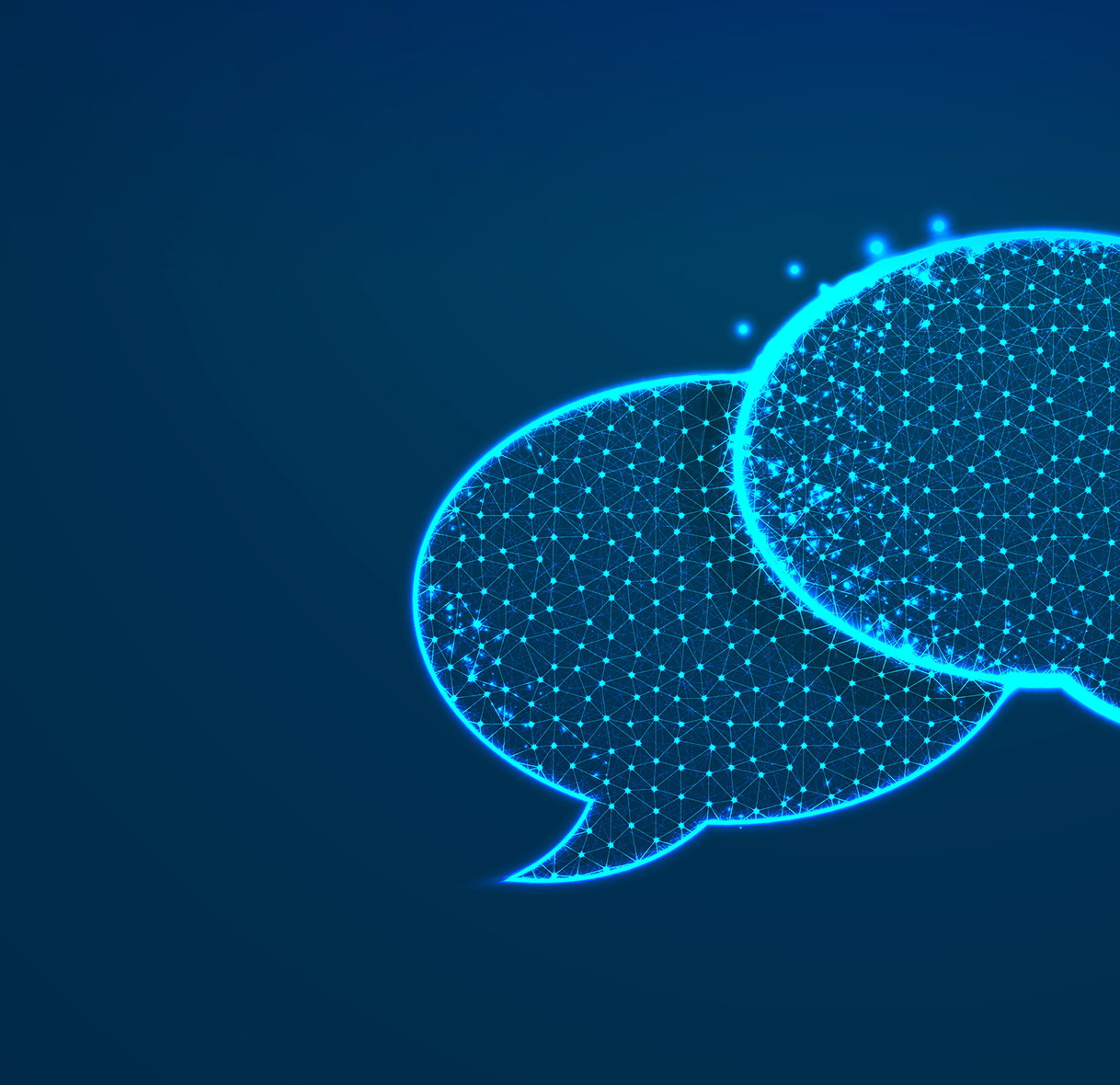
Conversational AI comprises diverse technologies tailored for human-computer interactions, with notable examples including AI conversation bots, voice bots, and interactive voice assistance systems.
AI conversation bots, primarily relying on text interactions, are utilized across websites, messaging applications, and social media platforms to enhance user engagement and provide efficient customer support.
Voice bots, exemplified by Interactive Voice Response (IVR) systems and voice assistants, operate through spoken language, offering hands-free interaction and performing tasks ranging from call routing to complex information retrieval.
Interactive voice assistance encompasses voice-enabled virtual assistants and conversational agents integrated into smart devices, enriching user experiences through intuitive spoken language interactions.
These technologies collectively harness natural language processing and machine learning, aiming to create more natural and efficient communication interfaces between humans and machines across various platforms. In fact, these bots have the capability to translate messages into the customer's language at the time of sending (with support for many languages). This feature ensures a seamless exchange across diverse linguistic preferences.
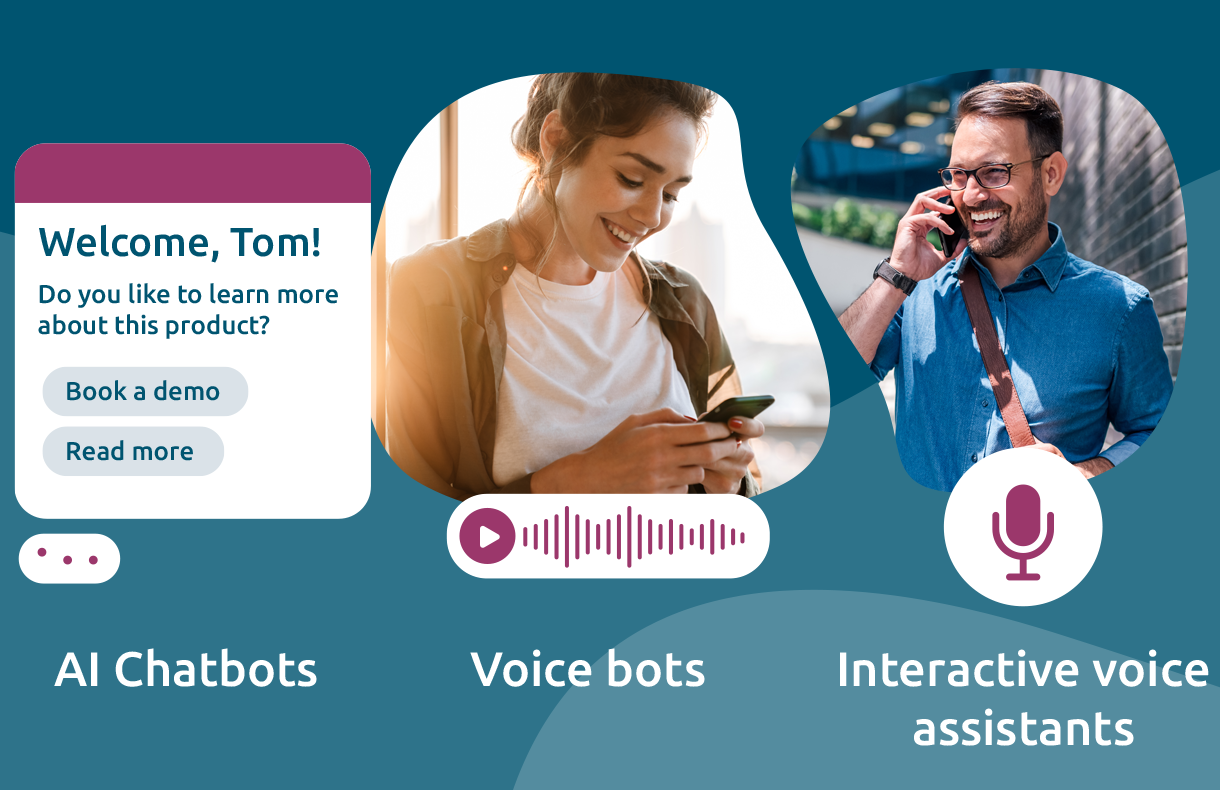
When humans and machines come together, efficiency and productivity reach its peak. And when live agents are adequately supported by technology, your overall service delivery becomes more efficient and empathic than before. Here’s how:
Experience the power of automated digital communication with ThinkOwl's AI Bot. Watch the video below! 👇
Please accept marketing-cookies to watch this video.
There is a multitude of modern technologies and features beyond Conversational AI that are set to redefine the way businesses engage with their customers. Conversational AI has undoubtedly been a game-changer, but our recent article goes further, exploring a diverse range of cutting-edge technologies and features that will take the customer support landscape by storm in 2024. For instance:
Additionally, from AI-driven analytics to real-time data insights and intuitive self-service options, the possibilities are endless. Discover these exciting trends in our latest blog post. Read Now!
